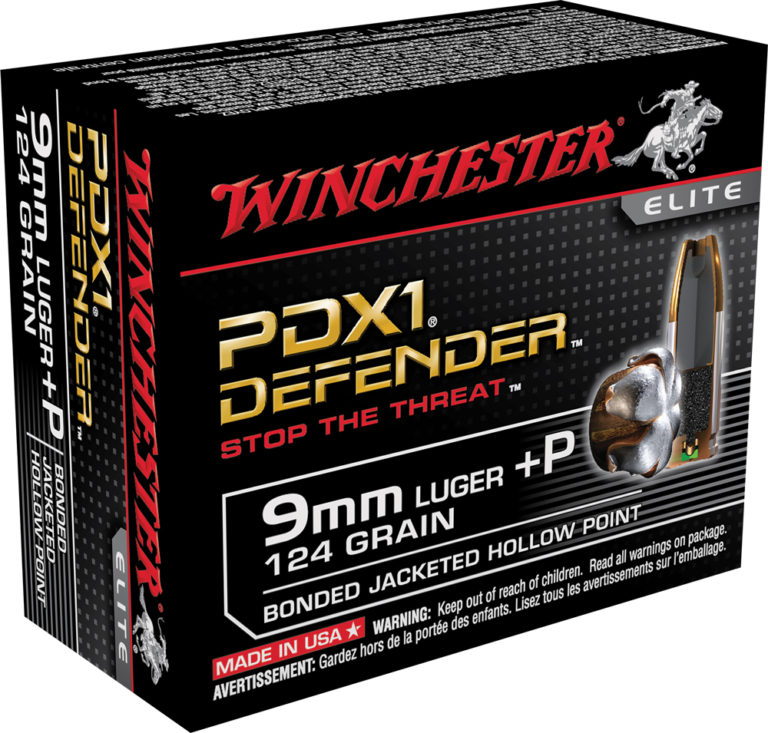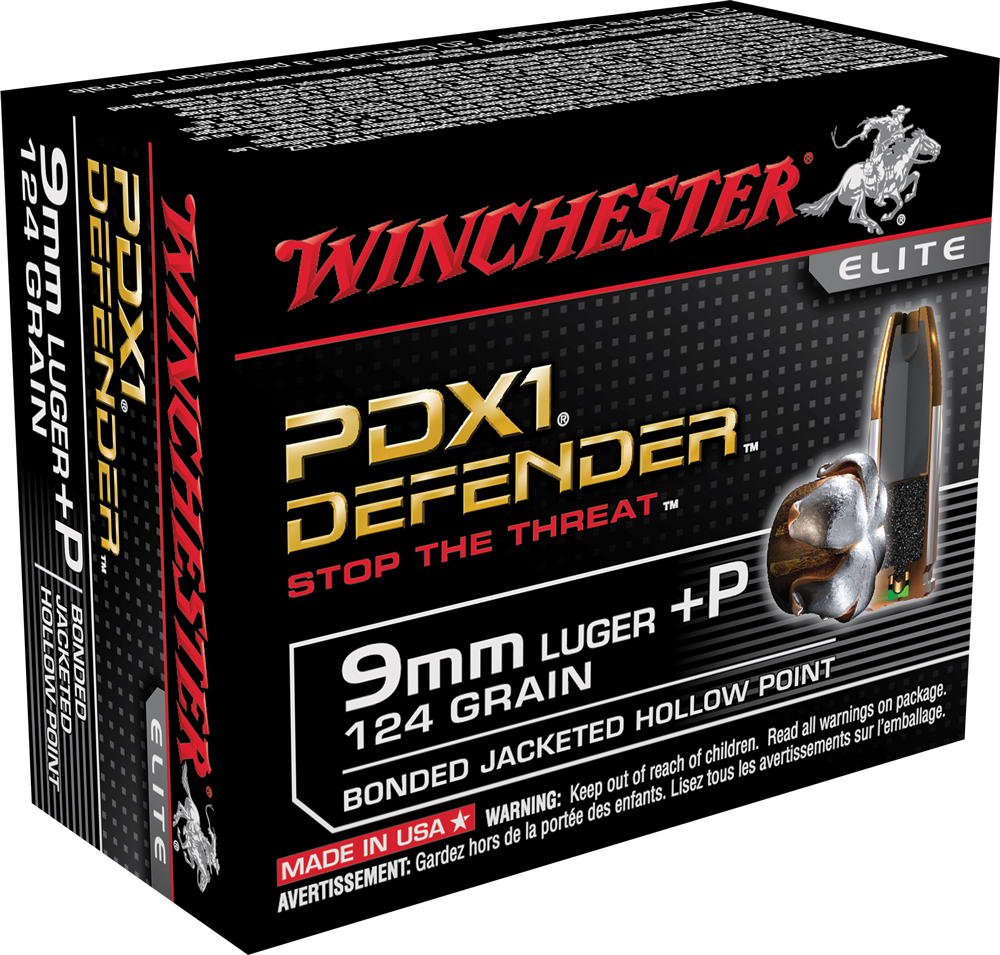
Why some guns can handle the pressure of +P ammunition and others cannot.
When discussing defensive handguns, a lot is said about calibers that are one-shot stoppers. The object of defensive ammunition is to stop the threat, and in most cases that means wielding a lethal blow to the assailant. But in reality, the concept of a pistol caliber that can reliably stop a bad guy with one shot is not possible under normal conditions.
A recent study of incapacitation data by the FBI Training Division states: “Shots to the central nervous system [CNS] at the level of the cervical spine [neck] or above are the only means to reliably cause immediate incapacitation. In this case, any of the calibers commonly used in law enforcement, regardless of expansion, would suffice for obvious reasons. Other than shots to the CNS, the most reliable means for affecting rapid incapacitation is by placing shots to large vital organs, thus causing rapid blood loss.”
While a single shot to the brain has instant stopping capability, shots to the head in defensive situations are rarely the best choice.
Most law enforcement officers and civilians simply don’t have the capability to make such shots reliably under the obvious stress of a life-threatening situation. As a result, ammunition for defense should be capable of penetrating sufficiently to access vital organs and generate massive blood loss. Until the 1970s, most ammunition for defensive use was the same ammunition used for target practice, training and military use.
None of this ammunition provided bullet expansion. No handgun ammunition for practical defense applications is capable of producing hydrostatic shock, which disrupts tissue far beyond the wound channel. Handgun calibers rely on penetration and the size of the wound channel. Expansion of the bullet helps, but there must be reliable penetration to get to those vital areas.
The energy produced by ammunition is what provides penetration and expansion. The more energy, the better the chance the projectile will penetrate and/or expand. In modern calibers like .357 SIG or .38 Super, all firearms available are of sufficiently recent manufacture to assure they can handle the pressures of modern defensive ammunition. This is not the case with rounds like .380 ACP, .45 Colt or .38 Special.
These rounds have been around for a century or more, and many of the guns chambered for them simply couldn’t handle a sizable increase in pressure. This is why .357 and .44 Magnum rounds are just slightly longer than their non-magnum counterparts. The longer case precluded their use in older guns that couldn’t handle the higher pressures.
Arguably, the first +P round was .38 Super. It’s an identical case to the old .38 Auto, but .38 Super is loaded to about 36,000 psi compared to .38 Auto at about 26,000 psi. While simply changing the name of the round worked, the ammunition manufacturers needed a designation to indicate ammunition made for modern firearms engineered to handle higher pressure, hence the development of +P and +P+ ammunition.
Also Check Out:
The amount of pressure change isn’t a standard percentage, but rather it’s based on the individual caliber and the design of the firearms available. For instance, the pressure increase for .38 Special and 9mm Luger is only about 10 percent, but the pressure increase for .45 Colt is almost double the pressure of standard ammunition.
This is because the original .45 Colt was a black powder round, and there are a lot of very old guns still capable of shooting that round. The modern guns chambered for the .45 Colt round are almost identical to guns chambered for .44 Magnum and are capable of much higher pressures without distress.
Just because a firearm is of newer manufacture doesn’t mean it’s capable of handling +P ammunition. Guns designed as such will have the +P designation indicated with the caliber. The advantages of +P are obvious, but they do come with the disadvantage of more recoil and muzzle blast.
For defensive situations, more power is better, provided you can handle it. Remember, however, that if you face a life-threatening situation, you’re not likely to feel the recoil, just like hunters don’t notice the recoil when taking game. Normal training can be done with standard ammunition, but +P defensive ammunition will give you a better chance if you find yourself in the unfortunate situation of having to use your gun to defend your life.
This article also appeared in the January 1, 2015 issue of Gun Digest the Magazine.

Next Step: Get your FREE Printable Target Pack
Enhance your shooting precision with our 62 MOA Targets, perfect for rifles and handguns. Crafted in collaboration with Storm Tactical for accuracy and versatility.
Subscribe to the Gun Digest email newsletter and get your downloadable target pack sent straight to your inbox. Stay updated with the latest firearms info in the industry.


![Best Concealed Carry Guns In 2025 [Field Tested] Wilson Combat EDC X9S 1](https://gundigest.com/wp-content/uploads/Wilson-Combat-EDC-X9S-1-324x160.jpg)


![Best 9mm Carbine: Affordable PCCs [Tested] Ruger Carbine Shooting](https://gundigest.com/wp-content/uploads/Ruger-Carbine-Shooting-100x70.jpg)
![Best AR-15: Top Options Available Today [Field Tested] Harrington and Richardson PSA XM177E2 feature](https://gundigest.com/wp-content/uploads/Harrington-and-Richardson-PSA-XM177E2-feature-100x70.jpg)

Decent comment but I strongly disagree with you that most officers are out there comfortably trying to go for the 1 tap.. Go watch 10 thousand police shooting videos.. You wiil find a few where high level swat officers going for headshot first but aside from the million reasons that headshots are not as viable someone like you who sounds like they know a decent amount should understand why headshots are not the first choice in more then 90 percent of police situations.. Now that’s just the normal reason they don’t but even police officers who train everyday do not encounter nearly enough situations where they discharge there weapon when they are faced with death to be comfortable going for the headshot first.. Its like mike tyson always said… Everyone always has a plan until they get punched in the face… Now there are plenty out there who have the ability to make the shot but to say that most cops could pull off a headshot while being shot at from even 15 yards is bullshit… Now im not gonna go into all the other reasons even though there are many.. Lets just say anyone who trains multiple times a week or has ever been in a REAL fire fight knows why even if they are capable going for the headshot first it is a rookie move in MOST situations…
Decent article but I strongly disagree with you that most law enforcement officers aren’t capable of making a head shot under stress. This is perhaps true with civilians but not with law enforcement. A majority of law enforcement officers these days are trained under stress, as much stress that could be produced at a sterile range environment. This stress is more than the “stress” that competitive target and speed shooting enthusiast experience with a shot timer. The stress involves moving, moving targets, exiting patrol cars, siren, low light, sound and other sight distraction and sim rounds being shot their way. Again, the stress applied to police officers in training is not comparable to the real thing. I am one of the unfortunate officers who had to use lethal force while on duty so I know this first hand. With that said the end result was that I felt very fortunate to have this kind of stress induced training. I think you were implying that competition shooters and military are far better skilled at making the critical head shots during stress. Police officers are trained very well, And I would further argue that they may be trained better than most military, excluding special forces of course. My argument is that most police officers are on the job for 20-30 years. In all of those years lies a lot of range time, both on and off-duty. Most infantry soldiers aren’t in that role but for a handful of years. Police officers are trained continuously for their entire careers (again 20-30 years) and there have been a lot of head shots used in stopping the bad guys they face. Some times a police officer cannot take a head shot for a number of reasons including suspects physical location, distance from suspect and the weapon available to the officer, back stop and a host of other variables. I almost feel your comment was a dig to professional police officers everywhere and should have been left out. I would take a professional police officer to a gun battle over a competition or target shooter any day as they can work under the stress of a gunfight.